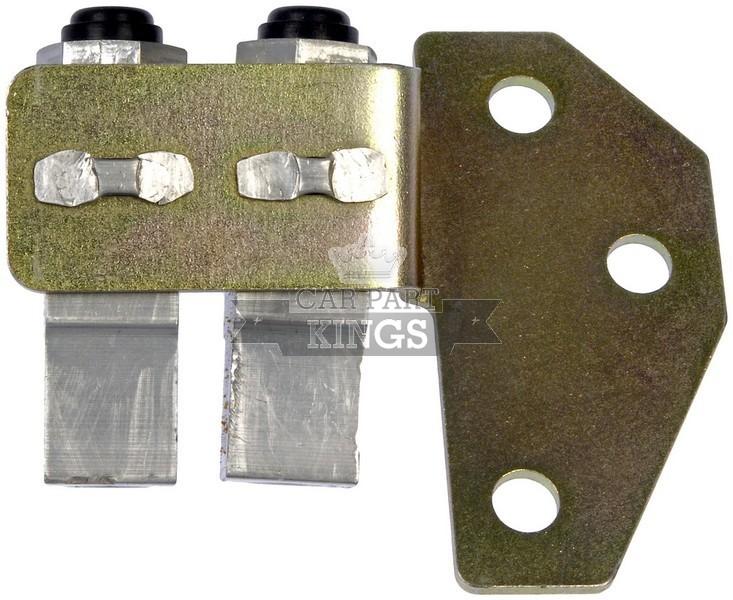we live outside of town and only have access to the one vehicle. As it stands there is no breaks at all. We cannot get into town for a new part, or afford a tow truck for the distance it would have to be towed. A taxi is out of the question as well as we are on a pension :(
is there a way to get at least front breaks? Is there a way to fix this small black rubbery part?
as I mess with it I find the black plug associated with the rear proportioning valve spins and wiggles a bit, while the one for the front is very solid in place. Is there a way to pull this out and jam something in to solid it temporarily. Perhaps tape? Or is it just a cap? I know its probably not recommended but sadly there is no choice as we are elderly and without a vehicle. There is no way for us to get a new part, groceries, or anything.
i have attached a picture close to the exact part I am talking about. You can notice the black parts on the ends. This is where the leak is. One side of this part leaks while the other is fine.
SPONSORED LINKS
Friday, January 24th, 2014 AT 11:05 AM




